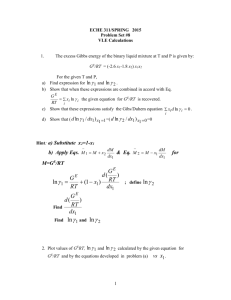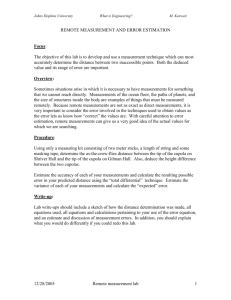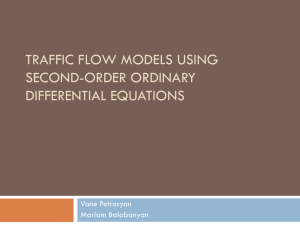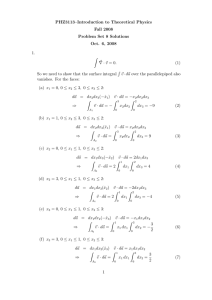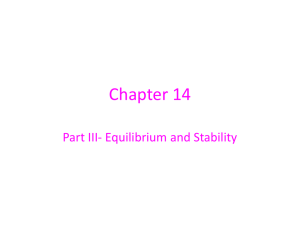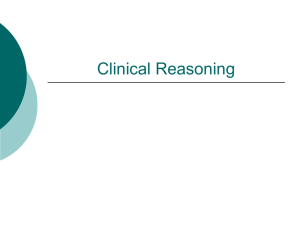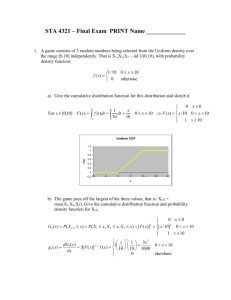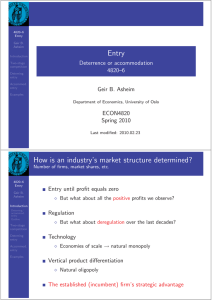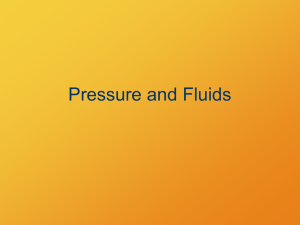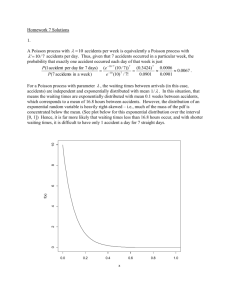Joint probability density function problem
advertisement
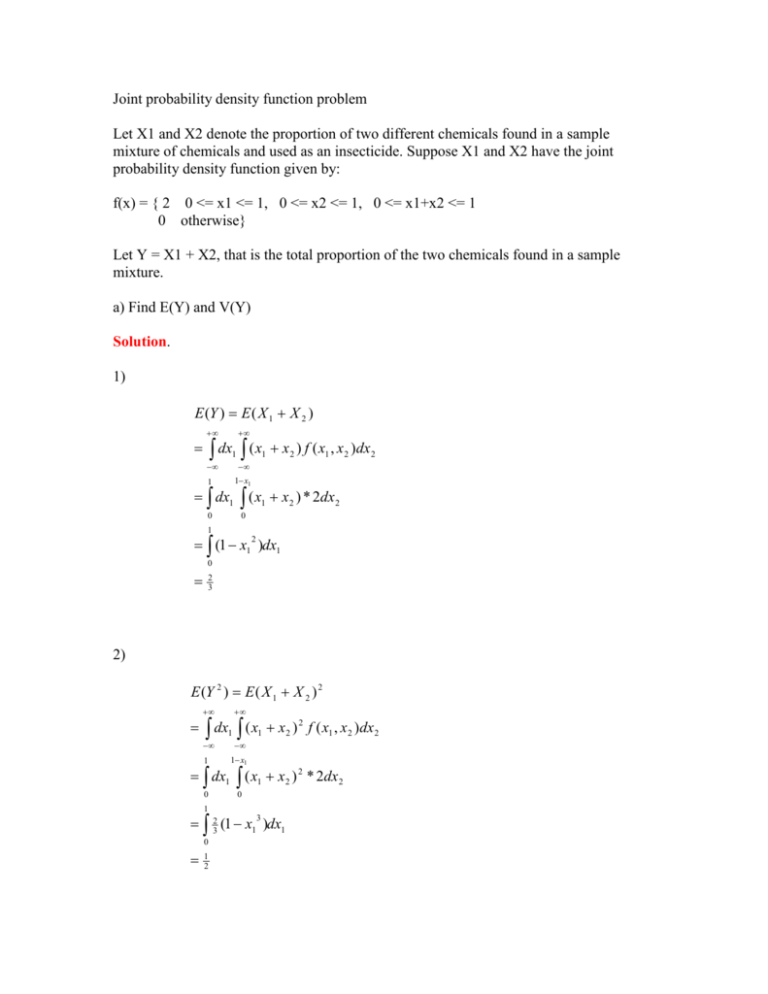
Joint probability density function problem
Let X1 and X2 denote the proportion of two different chemicals found in a sample
mixture of chemicals and used as an insecticide. Suppose X1 and X2 have the joint
probability density function given by:
f(x) = { 2 0 <= x1 <= 1, 0 <= x2 <= 1, 0 <= x1+x2 <= 1
0 otherwise}
Let Y = X1 + X2, that is the total proportion of the two chemicals found in a sample
mixture.
a) Find E(Y) and V(Y)
Solution.
1)
E (Y ) E ( X 1 X 2 )
dx ( x
1
1
x 2 ) f ( x1 , x 2 )dx 2
1
1 x1
0
0
dx1 ( x1 x 2 ) * 2dx 2
1
(1 x1 )dx1
2
0
2
3
2)
E (Y 2 ) E ( X 1 X 2 ) 2
2
dx1 ( x1 x2 ) f ( x1 , x2 )dx2
1
1 x1
0
0
dx1 ( x1 x 2 ) 2 * 2dx 2
1
23 (1 x1 )dx1
3
0
1
2
Hence,
V (Y ) E (Y 2 ) [ E (Y )] 2
12 ( 23 ) 2
181
b) Find an interval in which values of Y should lie for at least 50% of the samples of
insecticide.
Solution.
P (Y 50%)
P ( X 1 X 2 0.5)
1 P ( X 1 X 2 0.5)
0.5
0.5 x1
0
0
1 dx1
2dx
2
0.5
1 2 * (0.5 x1 )dx1
0
1
1
4
3
4
c) Find the correlation between X1 and X2 and interpret its meaning.
Solution. We can compute the following.
E( X 1 )
1
1 x1
0
0
dx1
1
dx1 x1 f ( x1 , x2 )dx2
x
1
* 2dx 2
2 x1 (1 x1 )dx1
0
1
3
dx1 x1 f ( x1 , x2 )dx2
E( X 1 )
2
2
1
dx1
1 x1
x
2
* 2dx 2
1
0
0
1
2 x1 (1 x1 )dx1
2
0
1
6
1
1 x1
0
0
dx1
dx1 x2 f ( x1 , x2 )dx2
E( X 2 )
x
2
* 2dx 2
1
(1 x1 ) 2 dx1
0
1
3
dx1 x2 f ( x1 , x2 )dx2
E( X 2 )
2
2
1
dx1
0
1 x1
x
2
* 2dx 2
2
0
1
23 (1 x1 ) 3 dx1
0
1
6
E( X 1 X 2 )
1
1 x1
0
0
dx1
1
x x
dx1 x1 x2 f ( x1 , x2 )dx2
1 2
* 2dx 2
x1 (1 x1 ) 2 dx1
0
121
So,
Cov( X 1 , X 2 ) E ( X 1 X 2 ) E ( X 1 ) E ( X 2 )
121 13 * 13
361
and
V ( X 1 ) E ( X 1 ) [ E ( X 1 )] 2
2
16 ( 13 ) 2 181 ,
V ( X 2 ) E ( X 2 ) [ E ( X 2 )] 2
2
16 ( 13 ) 2 181
Hence, the coefficient of correlation is
( X1 , X 2 )
Cov
11//1836 12
V ( X )V ( X )
1
2
As the coefficient of correlation is
( X1 , X 2 )
Cov
11//1836 12
V ( X )V ( X )
1
2
which is less than 0, we conclude that there is a negative relationship between X1 and X2.
